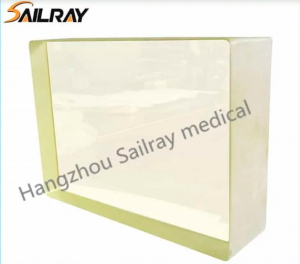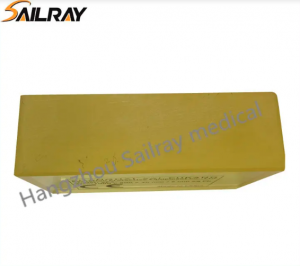Lead glass is a special glass whose main component is lead oxide. Due to its high density and refractive index, it is often used in X-ray shielding applications to protect people and equipment from harmful radiation emitted by X-ray machines. In this article, we discuss the importance and advantages of X-ray shielding lead glass in various medical and industrial applications.
Importance of X-ray shielding lead glass:
X-rays are electromagnetic radiation used in medical and industrial applications to penetrate objects and produce images of internal structures. However, prolonged exposure to X-rays can cause harmful effects on the body, such as radiation sickness, DNA damage, and cancer. Therefore, it is necessary to provide suitable protective measures for those who are continuously exposed to X-rays, such as medical personnel, radiologists and patients.
X-ray shielding lead glass is an effective way to protect personnel and equipment from the harmful effects of X-rays. The lead content in the glass blocks and absorbs X-rays, preventing them from passing through and causing damage. Lead glass is also transparent, allowing clear and accurate imaging of target areas without blocking X-rays.
Advantages of X-ray shielding lead glass:
1. Excellent shielding performance: X-ray shielding lead glass has excellent shielding performance for X-rays. It blocks up to 99% of X-ray radiation, depending on the thickness and lead content of the glass. This makes it a reliable and effective material for medical and industrial applications.
2. Clear and accurate imaging: Unlike other X-ray shielding materials, lead glass is transparent and will not affect the clarity of X-ray images. This allows for clear and accurate imaging of the target area without any distortion or interference.
3. Durable: X-ray shielding lead glass is a durable material that can withstand harsh conditions and frequent use. It is resistant to scratches, shocks and thermal shock, reducing the risk of damage and replacement costs over time.
4. Versatile: X-ray shielding lead glass is versatile and can be used in a variety of medical and industrial applications. It is commonly used in X-ray rooms, CT scanners, mammography machines, nuclear medicine, and radiation therapy.
5. Environmental protection: X-ray shielding lead glass is an environmentally friendly material that can be recycled and reused. It does not emit any harmful gases or chemicals during its service life, reducing its impact on the environment.
Medical applications of X-ray shielding lead glass:
X-ray shielding lead glass is widely used in medical applications to protect patients, medical staff and equipment from X-ray radiation. The following are some common medical applications of lead glass:
1. X-ray room: The X-ray room has high requirements for radiation protection to ensure the safety of medical staff and patients. X-ray shielding lead glass is commonly used in lead-lined walls and windows to block and absorb X-rays.
2. CT scanner: A CT scanner uses X-rays to produce detailed images of the body. X-ray shielded lead glass is used in gantry and control rooms to protect operators from radiation exposure.
3. Mammography: Mammography uses low-dose X-rays to detect breast cancer. X-ray shielding lead glass is used to protect patients and medical staff from radiation exposure.
4. Nuclear medicine: Nuclear medicine uses radioactive substances to diagnose and treat diseases. X-ray shielding lead glass is used to protect medical personnel and the environment from radioactive contamination.
5. Radiation therapy: Radiation therapy uses high-energy X-rays to treat cancer. X-ray shielding lead glass is used to protect operators and other patients from radiation exposure.
Industrial applications of X-ray shielding lead glass:
X-ray shielding lead glass is also used in various industrial applications to protect equipment and personnel from X-ray radiation. The following are some common industrial applications of lead glass:
1. Non-destructive testing: Non-destructive testing uses X-rays to check the integrity of materials and welds. X-ray shielding lead glass is used to protect the operator from radiation exposure.
2. Security: Security uses X-rays to scan luggage and packages for prohibited items. X-ray shielding lead glass is used in X-ray machines to protect the operator and surrounding area from radiation exposure.
3. Food inspection: Food inspection uses X-rays to detect foreign objects and contaminants in food. X-ray shielding lead glass is used in X-ray machines to protect the operator from radiation exposure.
4. Scientific research: Scientific research uses X-rays to analyze the structure of materials and molecules. X-ray shielded lead glass is used to protect the operator and surrounding area from radiation exposure.
5. Aviation maintenance: Aviation maintenance uses X-rays to inspect aircraft components for defects and damage. X-ray shielding lead glass is used to protect the operator from radiation exposure.
in conclusion:
X-ray shielding lead glass is an important material for protecting personnel and equipment from the harmful effects of X-ray radiation. It provides excellent shielding performance, clear and accurate imaging, durability and versatility for a variety of medical and industrial applications. As technology advances and the demand for X-ray imaging increases, the use of X-ray shielding lead glass will continue to grow and play a vital role in ensuring the safety of personnel and equipment.
Post time: Jun-05-2023



